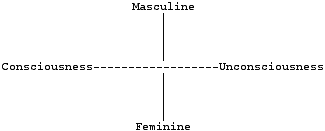

[ < Previous | Page 1 | Page 2 ] 3. Archetypes of Celebrity: Physical Appearance In addition to symbolism which may be garnered from leading box office stars, the characteristics of celebrities may also relate to major trends and events in popular culture such as the overall state of the economy. New research from Professor Abraham Tesser of the University of Georgia suggests that this is in fact the case. His research compared results of an annual poll of the public's favorite actresses with measures of social and economic health such as the unemployment rate and marriage rate. The Tesser study used leading film actresses in a 60 year period from 1932 to 1995. The results of the Tesser study are summarized in the April 1998 Psychology Today article "And The Winner Is...Wall Street" are informative. He found when national conditions were gloomy, the film audience preferred actresses with mature facial features such as small eyes, thin cheeks and large chins. In the depths of the Great Depression, moviegoers gravitated toward the mature-looking Marie Dressler and Janet Gaynor. However, when the nation's mood was upbeat and optimistic, people preferred actresses with babyish features such as large, round eyes, full cheeks and a small chin. During the postwar boom, therefore, audiences wanted to see baby-faced actresses such as Anne Sheridan, Judy Garland and Rita Hayworth. Tesser conjectures that when times are good, people are attracted to someone they can have fun with, someone lighthearted and playful. These are the qualities associated with the open, eager face of a child. On the other hand, when times are hard, moviegoers look for stars who are steady and reassuring and can steer them safely through the trouble they're in. While Tesser admits that movies are partly simple escapism, he also notes that people go to movies to satisfy certain emotional needs. "When the world seems like a scary place, " he says, "you want someone who will take care of you." The findings of the Tesser research may have implications beyond the silver screen. Tesser's research assistant Terry Pettijohn notes that "We might like mates, friends and people in general based on whether they have facial features that are appropriate for the social and economic moment." New research from Tesser and Pettijohn will study how preferences may change when the sense of security about the future is manipulated. For instance, the new research might ask the subject to imagine they have lost their jobs. 4. Creating The Celebrity Constellation Different methods of understanding celebrity symbolism might involve devices such as the creation of product positioning maps used widely in advertising and marketing research. These maps usually create the shape of a cross with four key qualities considered important in the product defining the north, south, east and west points of the cross. Perceptions are positioned within the four quadrants of the cross. One marketing research project has created a positioning map of super models images in the late 90s. The research by Melvin Prince is published in the March 1998 issue of Quirks Marketing Research in "How Are Supermodels As Advertising Spokeswomen?" The North axis of the map is "sincere," the South axis "elegant" and west axis "knowledgeable" and the east axis "attractive." The positioning include actresses as well as models. Clustered close to the "knowledgeable" point is Locklear and Schiffer; close to the "attractive" point Diaz and Hall; close to the "elegant" point is Evangelista and close to the "sincere" point is Moss.
Using positioning map logic, a perceptual map could be developed based around Gods and Goddesses of Greek mythology. Key positioning points be could be developed in the four directions and the gods assigned to particular regions of the map. While research needs to be undertaken as what dualities should exist in each axis, below is an initial concept for a celebrity positioning map:
Celebrity clusters could be compared to this map for various periods of history to see if the basic positions of the map remain constant. One key question might be not who was the dominant male star of a particular period but the amount of feminine or masculine qualities this male star possesses. Carl Jung noted female qualities in males and male qualities in women labeling these qualities anima and animus. Again, the variance between a John Wayne from American culture of the 50s stands in stark juxtaposition to a Tom Hanks or Leonardo DiCaprio of the 90s. 5. Celebrity As Zeitgeist As research into the symbolism of celebrity develops and moves forward, the important point to remember is that celebrities are in fact "products" of popular culture subject to branding and symbolism. While they are created in part by the Hollywood and Madison Avenue image machines, at the heart of mega-stardom and celebrity are forces in the collective unconscious of the times. The real star-making machinery is the needs pre-existing in collective culture rather than the needs of Hollywood to brand films by star attachment. Studios do in fact work hard to "brand" their inventory of talent because, for the most part, stars are the only true "brands" the studios possess. Attaching a star to a particular film means much more to the audience than attaching the studios logo to the film. People go to movies to see the star and not simply another Warner Brothers film. Only Disney has a true brand name that can sell films without the crucial attachment of celebrities to them. This may be both the cause as well as the result of a company built around animation rather than celebrities. Despite the best efforts of ever-sophisticated celebrity molding machinery out there, the ultimate audience in the matter is the collective unconscious. Hollywood can spend enormous amounts of money on "branding" new stars but its efforts will be far less successful overall if their actions go against the grain of the collective zeitgeist of the times. For example, using Professor Tesser's research above, a studio might want to consider whether investing substantial money in a star with a "mature" Marlene Dietrich look is well spent in a period of prosperity when the zeitgeist is in more of a "playful" and childish mood. Or, whether creating tough, female heroines like Sigourney Weaver or Linda Hamilton is wise during a period of dominance of films like Titanic and romantic leading women like Kate Winsett. The hero (star) of a particular film (defined as a contentual symbol) expresses and relates to a contextual symbolism. For example, an emotion of depression might better be communicated not through words or actions of the hero (content) but rather through the time and place (context) of the hero by placing in the setting of a dark valley at night rather than on top of a mountain at dawn. The film director and the screenwriter play a major role in creating this "off camera" context. Popular culture might itself be considered a type of on-going film with the collective unconscious of all of us taking the role of "directors" and "screenwriters." In this way, celebrities are like other of the most successful products which best express the overall context of the age. This context is the "script" that all of us collectively "write" and that finds expression in the top products celebrities. As Tesser suggests, the overall context might be related to a feeling of optimism or pessimism. It is the challenge for studios and others associated with branding celebrities to understand this contextual zeitgeist and find the right celebrities who can express it naturally from within. [ < Previous | Page 1 | Page 2 ] |

